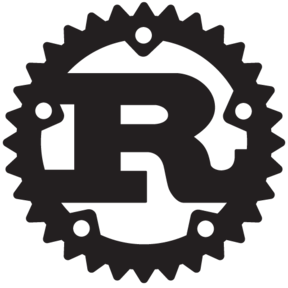Install cutler using Homebrew by simply running:
brew install hitblast/tap/cutlerImportant
The prebuilt binaries are compiled and shipped from macOS 14 on arm64. Intel Macs will require a manual compilation of the project.
If you use macOS, you might be familiar with changing settings using the
built-in System Settings app or the defaults command in the terminal. Both
methods can be tedious—and the terminal option usually involves manual tweaks.
That’s where cutler makes things simpler!
cutler is a straightforward command-line tool that lets you specify your macOS
preferences in an easy-to-read TOML file. It wraps the defaults command so you
can quickly apply or undo settings when needed. In addition to managing macOS defaults,
cutler now supports executing external commands and variable substitution – even falling back
to system environment variables if desired.
Check out the Usage section for more details.
Besides using Homebrew as shown above, you can install the project in a couple of other ways:
- Using
cargo:
cargo install cutler- Using
mise:
# NOTE: This will compile the binary manually for your system.
mise use -g cargo:cutlerTip
If none of these installation methods work for you, try checking out the latest GitHub release. You can also use the periodic release workflows, which have a retention period of 90 days.
cutler looks for your configuration in a file named config.toml, checking the following locations in order:
$XDG_CONFIG_HOME/cutler/config.toml~/.config/cutler/config.toml~/.config/cutler.tomlconfig.tomlin the current directory (fallback)
It respects your $XDG_CONFIG_HOME setting, so you don't have to worry about
path issues. Just place your config.toml file in one of these locations and
you're set.
Here’s a basic example of a TOML configuration for macOS defaults:
[dock]
tilesize = 46
[menuextra.clock]
FlashDateSeparators = trueFor more details on the different defaults domains and available values on
macOS, take a look at the Resources section. The TOML above
translates into these commands:
defaults write com.apple.dock "tilesize" -int "46"
defaults write com.apple.menuextra.clock "FlashDateSeparators"You can also configure settings for NSGlobalDomain like this:
[NSGlobalDomain]
ApplePressAndHoldEnabled = true
[NSGlobalDomain.com.apple.mouse]
linear = truecutler converts the above TOML into:
defaults write NSGlobalDomain "ApplePressAndHoldEnabled" -bool true
defaults write NSGlobalDomain com.apple.mouse.linear -bool trueWarning
Currently, cutler does not verify the integrity of domains or keys under NSGlobalDomain. Please review these settings manually before applying any changes.
Beyond managing macOS defaults, cutler now supports an [external] section that allows you to run any external command after applying the defaults. This is particularly useful when you want to trigger additional scripts or commands as part of your configuration. For example:
# Define reusable variables here:
[external.variables]
common_args = ["Hello", "World"]
[external]
[[external.command]]
cmd = "echo"
# If you reference a variable (for example, $common_args) and it isn’t defined
# in the [external.variables] section, cutler will fall back and try to resolve it
# from the environment (e.g. $PATH).
args = ["$common_args", "$PATH"]
sudo = falseThis roughly translates to:
echo Hello World /usr/local/bin:/usr/bin:...If you don't want to run into additional giberish, the external commands only require the cmd field to run, so it can be as simple as:
[external]
[[external.command]]
cmd = "echo"Once your configuration file is ready (including your defaults and external commands), apply your settings by running:
cutler applyAfter cutler updates the defaults, it will also:
- Execute any external commands defined in the
[external]section. - Restart necessary system services on your Mac so that the new settings take effect.
To verify current settings against your configuration, run:
cutler statusTo revert modifications, run:
cutler unapplyNow, when it comes to managing the configuration file itself, there is a config command which has two other subcommands:
# Shows the contents of the configuration file.
cutler config show
# Unapplies and deletes the configuration file.
cutler config deleteYou can add --verbose for more detail on what happens behind the scenes. For
additional information about all available commands, run:
cutler helpWhen you run cutler apply, a snapshot file named .cutler_snapshot is created
in your home directory. This file records your configuration state and lets you
revert to a previous setup if needed. It’s important not to overwrite or delete
this file manually, as it is essential for maintaining the integrity of your
configuration.
Finding the ideal set of macOS defaults can be challenging. Visit the macOS defaults website for a comprehensive list of available settings.
This is a personal project aimed at making the task of setting up a Mac more straightforward. Contributions are always welcome! Feel free to help out by creating a pull request or submitting an issue.
This project is licensed under the MIT License.

